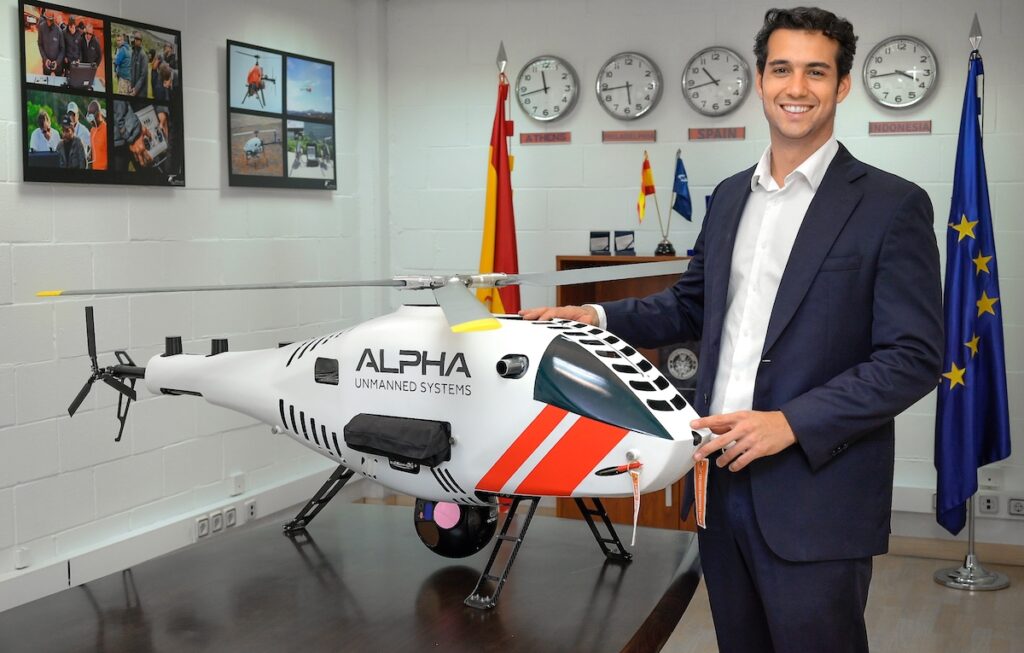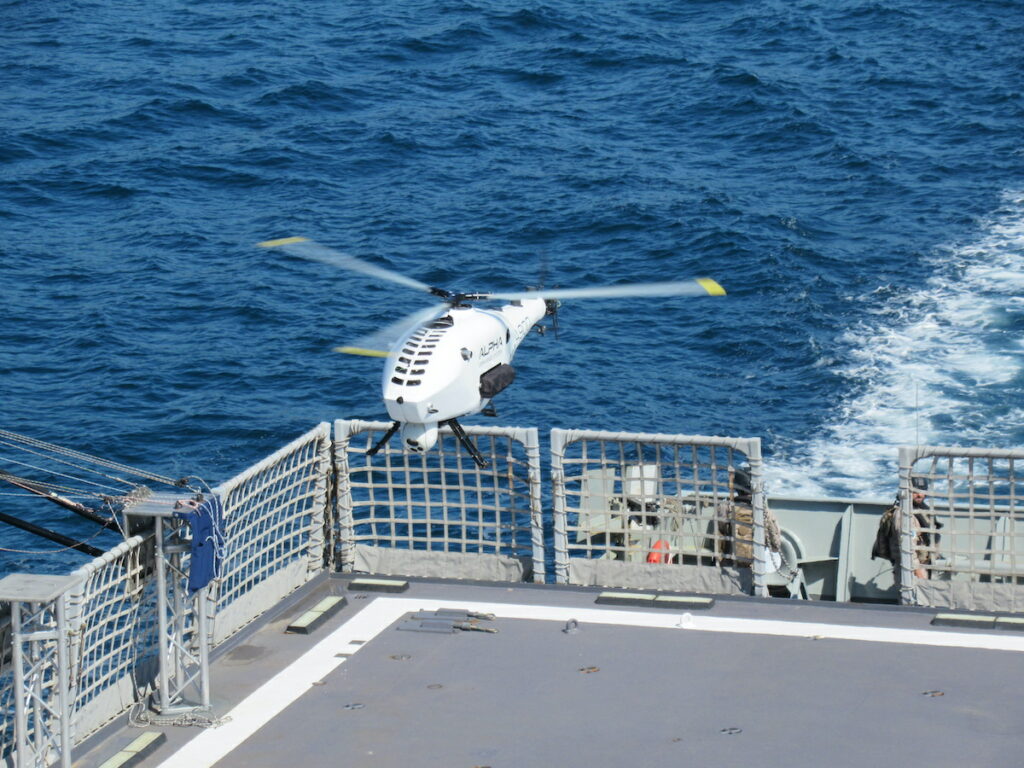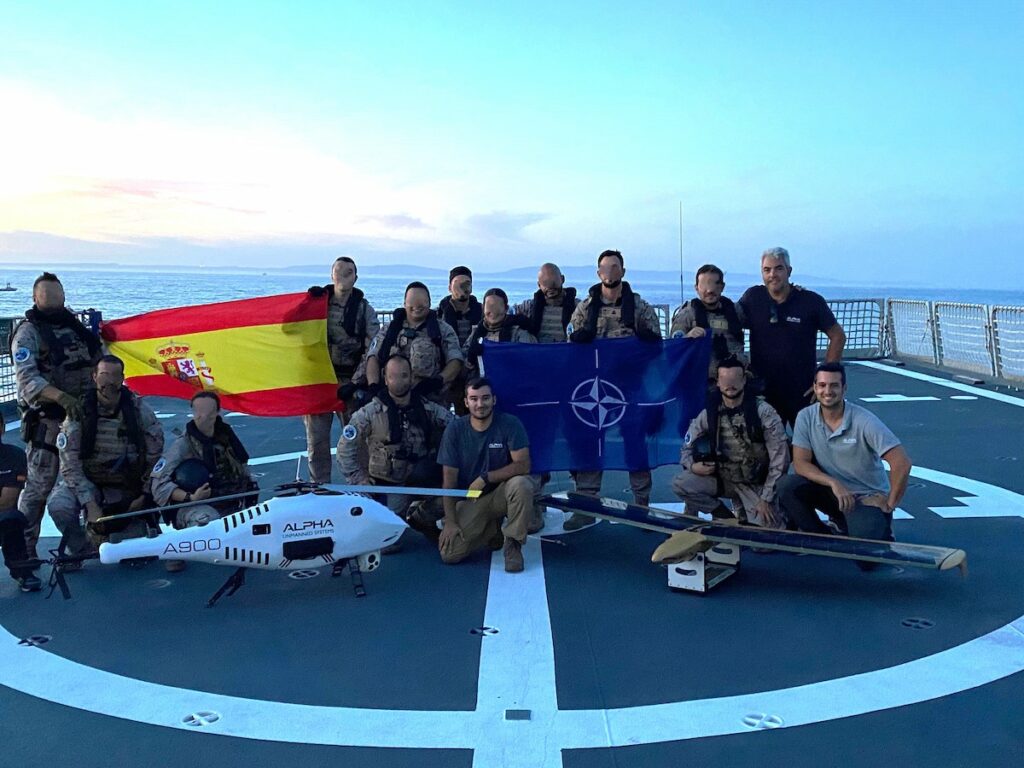
Alvaro, it is a pleasure to meet you and learn from your experience. Our readers are particularly interested in how your helicopter platforms, the Alpha 800 and Alpha 900 have evolved in the past few years based on your experience with customers. Can you please share your thoughts?
Hello. Thanks for your time today. Regarding your question, during the past few years our platforms have mainly evolved in two lines: reliability and versatility. To accomplish this, we have invested significant time and engineering effort on the following lines:
- Increased reliability and reduced maintenance of gearbox and main rotor and tail rotor bearings.
- Heavy fuel conversion: this has been one of the most challenging aspects due to multiple facts and the criticality of the changes executed on the power plant, but we are now operating as a regular basis with military heavy fuel.
- Finally we have increased the range of ambient temperatures in which the A900 can operate under by working on our proprietary design of the engine cooling system. This is extremely important when using heavy fuels with a high flash point as the engine temperatures must be kept within a close range of temperatures.
Can you please explain why you chose the format of a helicopter UAV rather than a VTOL fixed wing or a multirotor, and what if any advantages it may have?
Helicopters represent significant advantages over other platforms and for some missions, they may be the only type of platform that can be used – LIDAR or bathymetry inspections, for example, in which the sensor requires low (15-45 km/h) flight speed to operate correctly. Other missions like demining or submarine detection with sonar would rule out any hybrid fixed wing VTOL due to their inability to hover for sustained periods of time. Thus, ALPHA is committed to the development of the best small unmanned helicopters that can fly for hours instead of minutes under demanding environmental conditions.
As you may know, Alpha Unmanned was born as a helicopter UAV manufacturer because we are convinced of the huge advantage of helicopters in terms of aerodynamics and flight characteristics compared to other types of platforms. VTOL fixed wing UAVs need to carry large batteries for take off and landing and can not hover for more than a few minutes. Apart from that, they don’t handle very well the winds that you will find in maritime environments. The same thing happens with multirotors, which don’t fly so well in the wind. While the engineering and mechanics of a helicopter are rather complex, the benefits pay off especially in these demanding situations.
Are you still committed to fuel-based UAVs when much of the industry has turned to battery operated systems?
Yes Alpha is still committed to using fuel-powered systems for now. The power and endurance of a battery operated system still has, nowadays, no comparison to a fuel engine powered system. Although electric systems are getting better everyday, you cannot hover for 2.5 hours like our Alpha 900 does. Apart from that, thanks to our fuel engines, we are able to generate a lot of electricity during flight, which gives our systems the capacity to operate active payloads, with power demands up to 150 Watts.
We believe that in a matter of months we will be able to achieve a maximum of 6 hours of flight endurance at cruise speed and that is only possible fossil fuels right now.
At the same time the ability to use multiple fuels without changing the aircraft configuration represents a mayor advantage and flexibility for the users.
Alpha has always been known as a pragmatic company that uses off-the-shelf technology, including your autopilot. Can you help us understand what your strategic components are within your platforms?
As a small company, Alpha needs to focus its efforts to achieve its goals. Bearing that in mind, we prefer to use some commercial components to save some engineering time that we use to develop our platforms. Some key components have been in our designs for many years now, which has led us to know them very well, understanding the integrations and modify or develop what has been needed. Specifically talking about the autopilot, we also have a very close relationship with its manufacturer, having developed solutions together and, on many occasions, even tailoring the product to our needs.
Alvaro, as you know, reliability is essential in demanding environments like Ukraine. Are you on the path towards product certification? How do you ensure systems reliability for your customers?
Yes, product certification is on our roadmap. For instance we have obtained different Experimental Airworthiness Certificates, issued by the Spanish Army for many of our systems and have a BLOS Flight Permit. Also, as a company, we are certificated to the ISO9001 quality standard. Further, we have designed our systems to comply with the STANAG 4738 and we will pursue a SAIL 4 operational risk level Design Verification Review with EASA in the near future.
The war in Ukraine has certainly brought UAV technology to the forefront of many discussions about technology and defense applications. Can you describe how your systems operate in GPS denied environments?
Our autopilot is capable of recognizing a loss in GPS signal quality or even GPS based attacks like jamming or spoofing. In these circumstances, the autopilot will use dead reckoning methods to navigate, using accelerometers, gyroscopes and air speed to estimate its position. Apart from that, we have recently integrated a Visual Navigation System, which works together with the dead reckoning techniques, enhancing the accuracy of the GPS denied navigation and allowing mission success in such demanding environments.
Are you planning to weaponize the Alpha platforms? If not, what kinds of missions are Alpha’s helicopters best suited for?
Weaponization of our platforms is not a company objective. Our systems are well suited for ISTAR missions. Regarding other kinds of missions, Alpha’s helicopters are specially suited for ISR missions, border control, search and rescue, infrastructure inspections, mapping, etc. The flexibility of our helicopters in terms of payload integration also allows them for surveying missions like LiDAR surveys, power lines inspection, etc.
Also, can you share the latest types of sensors that you have integrated into Alpha’s platforms? Do you fly EO/IR sensors? Radars or others? How do you see new sensors evolving? Are there any that you consider essential for ISR missions?
One of the latest sensors we have integrated into our platforms has been an IMSI catcher manufactured by the Spanish company CENTUM. Teaming up this sensor with an EO/IR camera makes the Alpha 900 a powerful tool for mountain rescue or intelligence missions. We are also working on integrating a synthetic aperture radar. New sensors are getting better everyday, not only in terms of quality but also regarding their weight and size. Miniaturization is making it possible to integrate payloads in light UAVs that years ago we couldn’t even dream of. Regarding ISR missions, the EO/IR cameras are the key payload. Coupled with onboard image processing and AI algorithms, they are capable of autonomous target detection and recognition, sending only the processed information to the operator.
As you know, UAV systems must integrate into many additional information systems to be used effectively in active environments. Are Alpha’s systems able to be integrated into NATO communications/others? Can you give examples and share why this is important for Alpha Unmanned Systems?
Yes, during the past years Alpha has dedicated resources to integrate its systems into NATO operative networks.
 Working in close collaboration with some leading Spanish companies (GMV, Navantia, Telefónica) and with the Spanish Navy, we have developed the software interfaces to integrate the products information coming from our platforms into the Combat System of the Navy vessels and in the Mission Control centers on land.
Working in close collaboration with some leading Spanish companies (GMV, Navantia, Telefónica) and with the Spanish Navy, we have developed the software interfaces to integrate the products information coming from our platforms into the Combat System of the Navy vessels and in the Mission Control centers on land.
We have tested these integrations in the past year’s NATO exercises Dynamic Messenger, held in Lisbon during September 2023. During these exercises, the Alpha 900 was successfully flown from the Spanish Navi vessel BAM Furor, sending the data into the ship’s Combat System in real time during operations. This is important for Alpha as a differential key point that makes us stand ahead of many other manufacturers.
Lastly, artificial intelligence will be extremely important in autonomous systems. Can you describe how AI will be used by Alpha Unmanned Systems in the future?
As mentioned earlier, there are already autonomous systems for detecting and identifying targets or threats, but not only that. AI can also be in charge of optimizing missions, planning optimal routes, etc. Also, in multi UAV missions, autonomously deconflicting aircrafts, assigning assets to targets, etc. Apart from that, AI is of great applicability to other tasks such as fleet maintenance planning, aircraft maintenance diagnostics or flight parameters supervision.
Are there any other future trends regarding UAV technology, operations or training that you would like to comment on? Any thoughts on the limitations that customers experience when it comes to using systems like yours and others?
Regarding technology and operations, probably communications will experience a significant leap forward in the next few years with the general integration of 5G and satellite communications. This will make it possible to operate a UAV from virtually anywhere in the world, including the use of virtual reality or augmented reality helmets which will also be adopted as the standard human machine interface. Regarding the training, these kinds of helmets will help to get a more immersive experience, optimizing simulations and improving training. The main limitation we have found with customers during the years has been the steep learning curve these systems have, specially for the newcomers. Innovative interfaces like the helmets mentioned, online training and simulators will help to overcome these limitations.
Thank-you so much for your time Alvaro, it has been an absolute pleasure talking with you and we continue to follow Alpha Unmanned Systems with great interest.












